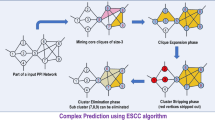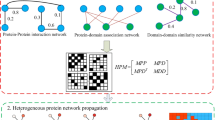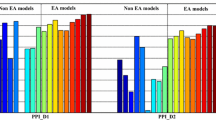Abstract
Accumulating evidence suggests that biological systems are composed of interacting, separable, functional modules-groups of vertices within which connections are dense but between which they are sparse. Identifying these modules is likely through capturing the biologically meaningful interactions. In recent years, many algorithms have been developed for detecting such structures. These algorithms, however, are computationally demanding, which limits their applications. In this paper, we propose a fast iterative-clique percolation method (ICPM) for identifying overlapping functional modules in protein-protein interaction (PPI) networks. Our method is based on clique percolation method (CPM), and it not only considers the degree of nodes to minimize the search space (the vertices in k-cliques must have the degree of k − 1 at least), but also converts k-cliques to (k − 1)-cliques. It finds k-cliques by appending one node to (k − 1)-cliques. By testing our method on PPI networks, our analysis of the yeast PPI network suggests that most of these modules have well-supported biological significance.
Similar content being viewed by others
Explore related subjects
Discover the latest articles and news from researchers in related subjects, suggested using machine learning.References
Barabasi A, Oltvai Z. Network biology: understanding the cell’s functional organization. Nature Reviews Genetics, 2004, 5(2): 101–113
Spirin V, Mirny L. Protein complexes and functional modules in molecular networks. In: Proceedings of the National Academy of Sciences, 2003, 100(21): 12123–12126
Gao L, Sun P G, Song J. Clustering Algorithms for detecting functional modules in protein interaction networks. Journal of Bioinformatics and Computational Biology, 2009, 7(1): 217–242
Bader G D, Hogue C W. An automated method for finding molecular complexes in large protein interaction networks. BMC Bioinformatics, 2003, 4(2): 1–17
King A, Przulj N, Jurisica I. Protein complex prediction via cost-based clustering. Bioinformatics, 2004, 20(17): 3013–3020
Prizulj N. Wigle D, Jurisica I. Functional topology in a network of protein interactions. Bioinformatics, 2004, 20(3): 340–348
Dongen S V. Graph clustering by flow simulation. PhD thesis centers for mathematics and computer science (CWI). Utrecht: University of Utrecht, 2000
Enright A J, Dongen S V, Ouzounis C A. An efficient algorithm for large-scale detection of protein families. Nucleic Acids Research, 2002, 30(7): 1575–1584
Brohee S. Helden J. Evaluation of clustering algorithms for proteinprotein interaction networks. BMC Bioinformatics, 2006, 7(488): 1–19
Blatt M, Wiseman S, Domany E. Superparamagnetic clustering of data. Physical Review Letters, 1996, 76(18): 3251–3254
Palla G. Uncovering the overlapping community structure of complex networks in nature and society. Nature, 2005, 435(7043): 814–818
Zhang S H, Ning X M, Zhang X S. Identification of functional modules in a PPI network by clique percolation clustering. Computational Biology and Chemistry, 2006, 30(6): 445–451
Ruepp A. The FunCat, a functional annotation scheme for systematic classification of proteins from whole genomes. Nucleic Acids Research, 2004, 32(18): 5539–5545
Bu D. Topological structure analysis of the protein-protein interaction network in budding yeast. Nucleic Acids Research, 2003, 31(9): 2443–2450
Sharan R. Conserved patterns of protein interaction in multiple species. In: Proceedings of the National Academy of Sciences, 2005, 102(6): 1974–1979
Goldberg D S. Assessing experimentally derived interactions in a small world. In: Proceedings of the National Academy of Sciences, 2003, 100(8): 4372–4376
Author information
Authors and Affiliations
Corresponding author
Rights and permissions
About this article
Cite this article
Sun, P., Gao, L. A fast iterative-clique percolation method for identifying functional modules in protein interaction networks. Front. Comput. Sci. China 3, 405–411 (2009). https://doi.org/10.1007/s11704-009-0048-9
Received:
Accepted:
Published:
Issue Date:
DOI: https://doi.org/10.1007/s11704-009-0048-9




